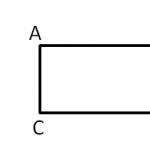Parquet, laminate or other flooring in your home can fail over time. However, there is a simple way using the most unpretentious canvas to install. Therefore, we will consider installation methods, the choice of underlay for linoleum on a wooden floor and some of the nuances of the work.
We glue linoleum with our own hands
Types of material
Linoleum is still a popular flooring choice. It is loved because it is inexpensive, durable, easy to clean and can be installed on any substrate. Depending on what raw materials are used in its manufacture, it is divided into several categories.
Polyvinyl chloride
The main components are synthetic polymers. It can have several bases, for example it can be made of fabric, foam or soundproofing material. Depending on its base, the coating will differ in quality characteristics.
Alkyd
It is made from resins of the same name with the addition of mineral fillers. The basis can be either synthetic or natural fabrics. It retains heat well and has little noise absorption, but this type is prone to cracking.
Rubber
Well suited for industrial use. The bottom layer is bitumen and rubber. It’s worth noting right away that it does not allow air to pass through, so it is not suitable for laying on wood.
Killoxyl
It is based on nitrocellulose. It is quite flexible and plastic, and most importantly, fireproof.
Despite their obvious differences, all these types are sold in a huge variety of colors and textures. Their wear resistance and price will depend on the raw materials from which they are made and the thickness of the top protective film. Therefore, study all its characteristics and consider how busy the room where you want to use it is.
Choosing a substrate
When deciding how to lay linoleum on a wooden floor, another question arises - whether an underlay is needed and what type to choose. If you are faced with the task of improving sound and heat insulation, then the substrate can be very useful. You need to choose it based on your needs.
For soundproofing
Good for sound insulation. Not only does it make the room quieter, but the flooring is also softer. However, cork is completely unsuitable for rooms with heavy furniture, since the legs can leave dents in the product.
A combined option, which includes jute, wool and linen, is also suitable here. Due to its rigidity, it will provide a hard and durable coating.
Polymer foam material can also make the room quieter. However, of all the options, it can be called the most capricious, since over time its structure loses its shape and sticks together. This causes trodden paths to form on the surface of your floor where you walk most often. To avoid this, the plywood is laid first and the insulation is usually placed underneath.
For thermal insulation
The idea of transforming a house or apartment can be supplemented with insulation. Therefore, you can take a closer look at substrates made of flax fibers. They do not accumulate moisture and provide a special microclimate between synthetic canvas and wood. The foamed type also has heat-insulating properties, but does not allow air to pass through, which can lead to fungus.
Flooring methods
There are two installation methods from which you can choose how to glue synthetic flooring.
No glue
It can be laid without the use of adhesives. This method is the simplest, but it is not particularly reliable, since the canvas will only be held in place by. This technology is used if the room is very small.
With double-sided tape
It can also be fixed with double-sided tape. It is pasted throughout the room in the form of a grid with sides of approximately 50 centimeters.
On glue
Glue for linoleum on a wooden floor will be the best option, as it will provide reliable and durable adhesion to the base. If you are thinking about how to glue it, then PVA will do the job best. For better adhesion, add a little gypsum to it. Prepare this mixture in batches as it hardens quickly. The gypsum in the glue will also help fill small cracks in old boards.

Installation subtleties
In order for the linoleum laid on a wooden floor to be beautiful and smooth, you need to learn a few tricks that will simplify your work and make the result better.
Temperature is very important here. Two days before work, try to ensure a stable temperature in the room. The most comfortable environment is considered to be no more than 18 degrees, and the base should be heated to 15. Don’t forget about humidity levels. The recommended level is no higher than 60%.
Give the material one more day to adapt. Unfold the roll, straighten it and lay it out with an allowance of 8 centimeters on the walls. Do not drop the roll during transportation as this may cause dents, cracks and scuffs.
If the installation area is large and you bought several sheets of the product, make sure that they are from the same batch. Otherwise, during installation you risk encountering problems with color and thickness mismatches.
The joints of the sheets must be laid with identical sides facing each other. However, this rule does not apply to canvases with certain textures and patterns that need to be laid in one direction.

How to lay linoleum on a wooden floor
Before laying linoleum on a wooden floor, the surface must be carefully prepared. After all, a good foundation is the key to long service life and wear resistance of the floor, regardless of its type.
It is worth studying all the details and subtleties of installation work in order to ultimately get the perfect result. Let's look at the process step by step: is it possible to lay it on boards, how and what to lay plywood on.
Preparatory work
If installation will be carried out on boards, old parquet or laminate, remove the baseboard and remove all dirt accumulated under them. After this, inspect the surface. If you do not notice any serious flaws or fungal damage, then you need to secure all the parts properly.
Carefully punch through each existing nail. All heads of nails and screws must be “sunk” into the wood. If you neglect this step, holes may appear on your coating in the future.
If installation will be carried out on boards or laminate, remove the baseboard and remove all dirt accumulated under them. After this, inspect the surface. If you do not notice any serious flaws or fungal damage, then you need to secure all the parts properly. Carefully punch through each existing nail. All heads of nails and screws must be “sunk” into the wood. If you neglect this step, holes may appear on your coating in the future.
For small cracks, putty is suitable, and for sealing wider cracks you can use thin wooden plastics that are pre-lubricated with glue. Using a hammer, carefully hammer them into the recesses until they are completely level with the surface.
After all the flaws in the form of bulges and depressions have been corrected and the glue has dried, sand the surface and carefully remove the dust with a vacuum cleaner. To protect the wood from pests and mold, treat it with a primer. This will be the final stage of processing the boards before laying the covering.
Remove the baseboards and clean the floor of dust and dirt. If protrusions and bulges are detected in some areas, you need to scrape. If the differences in height between the floorboards are small, then you can skip this step. If the surface has not been painted, then it should be allowed to dry thoroughly. If insulation is needed, install foam insulation on the subfloor. Next you can start working with plywood.
The gaps between the plywood are sealed with putty. It is correct to let it dry, otherwise in these places the flooring may rise from evaporated moisture.
Laying linoleum on a wooden floor is one of the construction tasks that can be done by people without special training, and in order to lay the material correctly, it is enough to familiarize yourself with all the nuances and rules for performing this work. What does a person who decides to replace an old wooden floor with a new beautiful coating need to know? First you need to learn as much as possible about such a practical covering as linoleum, and then how best to lay it.
There are a large number of types of linoleum
Linoleum: advantages, types, classification
Linoleum is made mainly from natural raw materials: tree resin, jute fabric, linseed oil, cork flour, limestone powder. This flooring is almost universal - it is optimal for apartments, residential buildings, offices and even industrial premises. The material is ideal for flooring in high-traffic areas, such as the kitchen, corridor, living room.
The popularity of linoleum is due to its many advantages:
- strength;
- waterproof;
- wear resistance;
- elasticity;
- ease of installation and care;
- a wide range of;
- acceptable price.
Depending on the raw materials from which it is made, linoleum is divided into the following types:
- Polyvinyl chloride, made from polymer material. Available on various bases: foam, heat-insulating, fabric, and also without base.
- Alkyd linoleum. It contains alkyd resins, mineral fillers and pigments. It is made from both synthetic and natural bases. Available in single-color, multi-color, and with a pattern. It is characterized by high heat and sound insulation properties, resistant to abrasion, but quite fragile, prone to the formation of breaks and cracks.
- Rubber linoleum or relin. Product thickness 3 mm. Its bottom layer is made of a mixture of bitumen with crushed recycled rubber, and the top layer of coating is made of colored rubber. Characterized by increased water resistance and elasticity. It is mainly used in industrial and production premises.
- Colloxy linoleum is usually a baseless coating that contains nitrocellulose. The material is characterized by moisture resistance, elasticity, fire safety, and has a peculiar shine.
In accordance with the linoleum manufacturing technology, the pattern applied to the base is covered with a protective layer, the thickness of which determines its wear resistance and, of course, cost.
Linoleum has a separate classification based on wear resistance. It is divided into:
- domestic;
- semi-commercial;
- commercial.
Domestic linoleum has fairly low wear resistance; it is usually used in residential premises.
Semi-commercial linoleum is characterized by average wear resistance, therefore it is recommended as a floor covering in rooms and offices with average traffic.
Commercial linoleum has very high wear resistance. This characteristic determines its use in high-traffic areas.
The use of linoleum according to the classification is advisory in nature. However, selecting the flooring in accordance with the purpose of the room and its degree of load is the key to its successful operation and long-term use. For installation on a wooden floor, it is better to choose linoleum with high sound and heat insulation properties. Having decided on the choice of linoleum, we proceed to its flooring.
Step-by-step instructions for laying linoleum
Linoleum must be laid only on a perfectly flat surface. Why? The fact is that if there are irregularities and flaws on the surface of the base, they will appear on the linoleum. In other words, the better the floor is prepared, the more beautiful the new coating will look and the longer its service life will be.

Preparing a wooden surface (laying plywood)
A plank floor becomes deformed and damaged during use, so experts recommend laying slabs of fiberboard, chipboard or plywood when preparing floors for linoleum. If the quality of the wooden floor is not bad, the thickness of the slabs can be 5-8 mm. If there are large differences, their thickness should be at least 15 mm. Next, we carry out the work of preparing the floor in the following sequence:
- We remove the old paint from the painted floor using a spatula, pre-heating it with a hair dryer.
- Using a hammer and bit, hammer the nails into the boards to a depth of 6-7 mm. We nail additional boards that squeak when walking to the joists.
- We level the surface using a plane (manual or electric) or a parquet sander.
- If you decide to lay linoleum on an old base, you need to vacuum it, wash it thoroughly and dry it.
- If you decide to lay plywood, you will need PVA glue or glue for laying parquet, to which filler is added to increase viscosity. Sheets of plywood are glued with an offset of half a sheet.
- Next, we additionally attach the glued plywood to the floor with nails. We fill the gaps between the sheets of plywood with the same mastic that was used to glue the plywood to the floor. We sand the joints.
- We saturate the dried plywood sheets with hot drying oil.
The surface is ready for laying linoleum. The work is painstaking, but it will pay off in the future with beauty and durability.
To lay linoleum on a wooden floor, you must first leave it in this room for a couple of days so that it can stand and straighten at room temperature. Its surface should be perfectly flat, without a single bend or fold. If you notice the presence of any bend, it should be straightened by pressing the linoleum with boards, books, and other objects.
Linoleum should stand and straighten for a couple of days indoors
If you find too many creases or folds in the material, it is better to replace it, since during installation it will create additional difficulties, and after installation the floor will be uneven and, accordingly, impractical.
Important! Laying linoleum on a wooden floor should be carried out at a room temperature of at least 16ºC and humidity within 40-60%.
We calculate the amount of material needed:
- measure the length and width of the room and add 10 cm;
— take into account protrusions (the space under the door, window, closet);
— if there is a pattern, we take into account the reserve for 1 pattern repeat in both directions.
Important! If linoleum is cut incorrectly, leaving allowances, it may later happen that it will form waves.
Before laying, choose the correct direction of the linoleum to hide the seams. Marble and plain linoleum must be placed along the line of light. If there are drawings, they are placed in the longitudinal direction so that they match. If linoleum is laid on a wooden floor, then the joints are made in the middle of the board.
We prepare the tools necessary for installation:
- well-sharpened knife;
- steel notched spatula;
- wooden spatula;
- short and long rulers;
- glue, composition for welding seams
- double-sided adhesive tape.
Linoleum flooring methods
No gluing . This method is the fastest, but it is suitable for low-traffic areas of no more than 12 m2. With this type of flooring, the coating wears out faster and there is a high probability of wave formation.

Laying linoleum using a glueless method
Gluing with double-sided tape . This method will protect the linoleum from rapid wear. And if the need arises, it can be peeled off without difficulty, although traces of the tape may remain on the floor of the room.

Gluing linoleum with double-sided tape
Bonding with glue . This method does not have the disadvantages of the first two. If the area of the room exceeds 20 m2, then this is the only acceptable method. In this case, the service life of linoleum increases significantly. But laying the coating in this way is a rather labor-intensive process.

Laying linoleum with glue
The process of laying linoleum
We spread the linoleum on the floor, not forgetting to leave a margin on the baseboards (5-10 cm).
We smooth the coating with our hands from the middle to the walls, and so that it fits better to the walls, we make small cuts in the corners.
If we lay linoleum without gluing, cut off the excess along the baseboard with a sharp knife, then secure it in the doorways with metal slats.
If we glue it with double-sided tape, then first stick the tape around the entire perimeter of the room without removing the protective layer. Unroll the roll and fold one half over the other. Now remove the protective paper, spread the linoleum, smooth it with your hands from the center to the walls.
We do the same with the other half. Cut off the excess along the baseboard. We secure it in the doorways with sill strips.
If we are installing with glue, then after bending one half of the linoleum, apply the glue to the floor and spread it with a roller or notched trowel. Leave for 20 minutes, then unbend the folded part of the covering and carefully smooth it out with your hands.
We perform the same operations with the other half. We cut off the excess linoleum, press the edges against the walls with a plinth, and install slats-thresholds in the doorway.

The edges of the linoleum are pressed with a plinth, metal slats are placed at the doorways
If, for example, for some reason it is necessary to lay not one strip of linoleum (the room is large, or it was not possible to find linoleum of the required width in the store), but several, then they will have to be joined. This is done as follows:
- We lay the strips of covering so that they overlap each other by approximately 10 cm.
- We bend one strip, apply glue to it and glue it to the floor. We do the same with the other strip.
- Using a sharp knife, cut off both layers of linoleum at the overlap, remove the trimmings and carefully glue both edges so that the resulting joint is as inconspicuous as possible.
- After the glue has dried, we glue the joints using a special liquid for cold welding of seams. First apply adhesive tape to the seam. After a few hours, when the seam begins to weld, the tape must be removed.
After gluing the linoleum, press it tightly with a roller or a special roller. Until the coating is completely dry, do not step or walk on it.

Do not walk on glued linoleum until it is completely dry
Having familiarized yourself with the intricacies of choosing linoleum and the process of laying it on a wooden floor, there is no doubt that it will not be difficult for you to do it yourself. You can safely get to work. And in a dozen or two years, when you want to update your floor, it will not be difficult to change the coating to another if the base has been properly prepared.
6211 0 0
How to lay linoleum on a wooden floor: methods you might not know
Greetings, dear readers. This time I will talk about how to lay linoleum on a wooden floor. This information will certainly be useful to owners of old country houses or apartments in old houses where plank floors are still laid.
The topic is of considerable interest, since it is in rooms with wooden floors that renovations are most often planned in order to update the floor covering. In addition, it is in such rooms that replacing the flooring is considered the most problematic due to the textured base.
Difficulties in laying roll coverings on a plank base

Before laying linoleum on a wooden floor, let’s find out what difficulties are associated with laying the covering on plank bases:
- Firstly, the boardwalk is embossed and this relief will appear through the coating over time;
- Secondly, due to the difference in floor temperature and air temperature, moisture can accumulate under the linoleum, which will lead to mold;
- Third, the boardwalk is unstable, since old boards sag, which negatively affects the strength and foundation;
- Fourth, most wood flooring is painted with oil paints, but the glue does not cling to them, which means there will not be the required adhesion with the coating.
So, the problem is clear, all that remains is to decide on its solution.
Methods for laying coverings on a plank base
Let's find out how to properly lay linoleum on a wooden floor? Firstly, you can level the base using a sanding machine, followed by filling in uneven areas with putty mixtures. This method is relevant for floors that are not too old, in which the boards do not sag or creak.
Secondly, you can lay certain board materials on top of the boardwalk, including plywood, oriented strand boards, wood fiber boards and other boards. This method is relevant for old foundations.
Thirdly, the boardwalk can be completely dismantled and a smooth, warm screed based on expanded clay concrete can be poured. This is an extreme option, which is only relevant if the rough wooden base is generally dilapidated.
Leveling boards with a sanding machine

I will say right away that this method is very labor-intensive, dusty and dirty. In addition, not everyone has a scraping or grinding machine. But, if the required tool is available, you can try.

The instructions for leveling the surface are as follows:
- Using a hammer and punch, we press the nails about 2 mm below the surface of the boards;
- Using a scraping machine, we make as many passes as necessary to level the boards to the same level;
- We fill the gaps between the boards with elastic putties or silicone sealant.
In addition to the fact that leveling wooden surfaces with sanding is a labor-intensive and dusty job, there is a high probability that on a painted floor you will miss a couple of nails and not drown their heads.
Such an oversight will lead to fatal consequences for the machine’s knives, which will have to be sharpened again.
Leveling the floor with slab materials
This type of preparation of a plank base is the most popular due to the ease of doing it yourself.
When choosing slabs for leveling, the following parameters are taken into account:
- height difference between the rough base and the door threshold;
- degree of floor unevenness;
- degree of thermal insulation of the subfloor;
- budget allocated for repairs.
The most popular material for leveling the base is multi-layer moisture-resistant plywood.
Among the advantages of the material we note:
- a wide range of standard sizes and, as a result, the ability to choose the optimal thickness;
- resistance of the multilayer structure to mechanical loads;
- perfectly flat surface in comparison with other slab materials;
- high density of the structure, due to which screws are well held in the thickness of the slab;
- acceptable price.
Leveling technology
Instructions for leveling with plywood boards depend on the levelness of the wooden base.

If the subfloor does not have significant differences in levels, you can lay plywood directly on the boards. In this case, the level of the base will rise by the thickness of the laid material. If the floor has significant differences in level, logs are pre-installed on which plywood is laid.

Let's say you examined the floor in a room and found out that it is not level enough. What do we do in this case?
The instructions for leveling the base are as follows:
- We screw in self-tapping screws over the entire area of the base at a distance of 30 cm from each other, so that they are located above the floor at a height of 2 cm;
- using a water level and a cord, tighten the screws so that they come to the same level;

- using self-tapping screws (beacons) we install micro-lags (slats) no more than 2 cm thick;
- We fix the logs with wood glue or liquid nails, placing plywood inserts under them to level the surface;
- We lay a substrate no more than 2 mm thick on top of the logs;
- cut plywood sheets into square pieces with a side of 1 m;

- We fasten the pieces with self-tapping screws to pre-installed joists, pre-drilling the holes for the caps;
- after the first layer of plywood is laid, we lay the second layer, and place the slabs offset relative to the slabs in the first layer;
- after the floor is completely leveled, we pass along its surface with a grinding machine, removing differences at the junction of the plates;
- we fill the recesses for the screws and the gaps between the plates with silicone sealant.
Similarly, you can level the floor using chipboard, OSB, fiberboard, etc. But in the case of using other board materials, the thickness of the leveling layer with the same coating strength will be greater.
Leveling the base with a warm screed

If the boardwalk is very old and has not been repaired for a long time, it will be easier not to restore it, but to completely remove it and fill it with expanded clay concrete screed.
Due to the high content of expanded clay, such screeds are much lighter than conventional concrete foundations, and therefore can be used both in country houses and in apartments on the floor.

The proportions of expanded clay concrete are as follows:
- 1 part cement;
- 2 parts sand;
- 3 parts expanded clay.
The composition is made an order of magnitude thinner than ordinary concrete, which is due to the high absorbency of expanded clay. After expanded clay concrete has gained brand strength, the surface is leveled with a thin layer of cement-sand mixture.
Flooring installation
So, I talked about the most popular methods of leveling bases for laying roll (soft) coverings. All that remains is to find out how to lay linoleum on a wooden floor.

Let's look at each of the stages listed in the diagram in more detail.
If the base is ready, the installation instructions are not much different from the standard linoleum flooring technology. At the initial stage, acclimatization of the material is carried out. That is, the purchased roll is kept at room temperature for several hours.
After this, the canvas is unrolled and laid with the finishing side up for a day for leveling. This is a mandatory step, which allows you to prevent the appearance of waves when gluing; in addition, leveled linoleum is much easier to cut.

The cutting of the material is carried out taking into account the configuration of the room and taking into account the color of the canvas:
- If linoleum imitates the surface of parquet, we place it so that the direction of the boards goes in the direction of the light from the window, then the floor covering will look much more advantageous. Again, take into account the location of the thresholds and do not forget to leave 5-10 cm of overlap on each wall. These excesses can be removed after gluing;
- After cutting, the material folds in waves and moves closer to the front door. Apply the glue starting from the wall furthest from the front door. We glue the covering, gradually moving towards the front door;
If you notice that the coating is uneven, it can be unrolled and corrected within 5 minutes after installation and this will not affect the quality of installation.
- We carefully glue the linoleum near the walls and in the corners. After the coating is glued, but the glue has not yet dried, we level the coating with a rubber roller or a damp mop. As a result, there should be no wrinkles or blisters on the floor surface;
- After the covering is glued, use a sharp mounting knife to cut the linoleum around the perimeter of the walls. The final stage of installation work is to press the coating around the perimeter.
Selection of materials for installation
The table lists glue modifications that will ensure optimal adhesion of PVC linoleum and plywood.
Conclusion
So, is it possible to lay linoleum on a wooden floor? Of course, you can, but you need to do it correctly. To make the task easier, watch the video in this article.
Do you know other more effective ways to lay linoleum? Write about them in the comments to the article, it will be interesting.
There are many types of flooring, and they can be laid on different substrates. Now we will talk specifically about how to lay linoleum on a wooden floor.
At first glance, it may seem that nothing is simpler, but in fact, such work has its own problems that you need to know about so that the linoleum lays smoothly, beautifully and without defects.
Linoleum is a material that is suitable for all types of rooms, except wet ones. That is why it is extremely popular.
For example, it is not advisable to lay linoleum in a bathroom or shower room, since it can be distorted, and moisture trapped under it will be an excellent environment for the development of mold. And for rooms and offices, this is one of the best and most affordable coatings.
If you want to lay linoleum on a floor made of wooden boards, first of all, you need to think through everything, take measurements and buy materials.
To the resulting floor dimensions, you need to add 10% for leftovers.
This is the most common option. It has excellent elasticity, is quite durable and not very expensive.
Foam-based PVC is also an excellent option. Such linoleum will additionally provide sound insulation and warmth.
Some manufacturers produce ready-made linoleum with thermal insulation material. These models are suitable for installation at home; they have no use in the office.
Material without base
In such rooms where it is necessary to create a uniform structure of the floor covering, it is better to use linoleum without a base. It is durable and highly resistant to aggressive external factors.
For a wooden base, it is better to choose linoleum made from natural and environmentally friendly components. This coating is completely anti-allergenic and does not emit harmful toxins.
Relevant for installation in children's rooms, bedrooms and living rooms, as well as in apartments where residents are prone to allergies. The disadvantage of such linoleum is its not so long service life.
As for the thickness of the PVC coating, 4 mm is best suited for laying on a wooden floor. It is durable and will last a long time.
Defects will not be so obvious if the floor suddenly begins to deteriorate over time. Well, when laying it, it’s easier to work with such material - there are much fewer tears.
When choosing linoleum for a room or office in a store, start from the interior design to decide on the pattern. Even if there is a carpet on top, the covering should still fit harmoniously into the interior.
Pay attention to heat and sound insulation qualities. Also ask to unwrap the roll and check for any defects on the material.
When purchasing several rolls, pay attention to the color. Sometimes it happens that at first glance the design is identical, but if you look closely, the color may be slightly different.
Preparatory stage
Linoleum is the most common floor covering. It has many advantages, such as high wear resistance, durability, ease of maintenance, environmental friendliness and affordable price.
Due to its flexibility, the material duplicates all the unevenness of the surface on which it lies. If you lay it on a wooden floor, without preliminary preparation, it will repeat all the defects - cracks, bulges, irregularities and caps from the hardware with which the boards are attached.
Preparing the floor
In order to achieve a perfectly level base, you need to assess its condition and carry out repair and preventive maintenance:
- eliminate creaking floorboards (attach the boards more firmly to the base with self-tapping screws)
- make sure that the boards are not affected by fungus and mold (if something happens, replace them)
- for differences of more than a centimeter, it is necessary to additionally lay plywood on the damaged areas
- carefully fill the gaps between the boards, then sand and apply primer
- if the paint on the floor is cracked, it is better to remove it
When the floor is perfectly flat, you can begin processing it before laying linoleum. First you need to hammer in all the nails so that the heads do not stick out.
Then carry out the initial scraping, and then patch the cracks. To do this, fill all joints with acrylic putty.
It is elastic and will help avoid deformation of the wood and surface coating during temperature changes. When the material is completely dry, the entire surface must be thoroughly sanded, all dust removed and primed.
Never lay linoleum or other flooring over a damaged wood floor, as this will significantly reduce the life of the new material.
If the old floor is very crooked and the boards do not lie level, you need to make a bedding from. It will provide a perfectly flat surface and ensure water resistance, thereby extending the life of the old floor for many years.
Installation of plywood backing
Tip: If the floor is too damaged to begin with, consider replacing it. Major repairs and elimination of all defects will take more effort, time and investment. And a new floor is a guarantee of quality and protection from rotting.

First, you need to measure the plywood and cut the panels to the required length.
It is best to do this with a circular saw so that the cutting lines are even and smooth.
You need to retreat one centimeter from the wall.
All sheets are attached with self-tapping screws to the beams and the old one.
Hardware must be driven into the wood so that there are no protruding heads left, otherwise they will later appear under the linoleum. When the floor is ready, the joints are puttied, sanded and covered with primer.
Preparation of linoleum
Even before choosing and purchasing linoleum, you should take measurements of the floor, taking into account all the recesses where the material will have to be trimmed. Linoleum is sold in rolls of a certain width.
If there is no suitable size, then you will have to mount and make joints. If you have this situation, keep in mind that the joint should be placed parallel to the long wall in the middle. When calculating the material, take into account the margin for adjusting the pattern in case of a joint.
When you have already purchased the required amount of coverage, be sure to lay it out in the room where it will be spread and leave it for 24 hours. This is necessary so that the elastic linoleum takes shape depending on the temperature and levels out after the roll.
Laying linoleum
When the base and linoleum are ready for installation, you can begin. Some roll coverings require gluing, and for some it is enough to fix the linoleum around the perimeter.
This is especially true in small rooms, where the square area is no more than 10 meters. In the event that docking is provided, glue will be required.
Tools:
- roller for linoleum
- square
- sharp knife
- roulette
- seam roller
- scraper or spatula
Before laying, you need to roll out the roll and cut off the required piece. Calculate so that the material extends about 8 centimeters. At the end, when it straightens and settles, the excess is cut off half a centimeter from the wall.
This gap will later be covered with a plinth. Use a very sharp knife to make the cut, otherwise you may damage the coating.
If you decide to fix it completely with glue, then roll back part of the linoleum and apply glue to the floor. The same operation must be done on the other side of the piece.
If you rarely use your dacha, then you don’t need to spend much on expensive coating models. It is enough to buy one of the cheapest materials and decorate your house. But this does not mean at all that the old, crooked and rotten floor does not need to be restored.
How to properly lay linoleum is shown in the video:
When installing linoleum on a wooden floor, you need to take into account a few tips from experts in order to get the job done efficiently:
- When laying the material, it is better to leave gaps around the perimeter of the room, measuring 8-9 mm. As a result, this residue will be hidden by the baseboard. But in the event of a temperature change or increase in humidity, linoleum does not deform or swell.
- The base for linoleum must be perfectly dry. Even a drop of moisture can cause mold to develop and lead to rot.
- If the room is no more than 10 sq. meters, then the material does not need to be glued if it does not have to be joined.
- When laying on a wooden floor or plywood, you can lay a layer of insulation under the linoleum.
- The joints can be processed by cold welding, hot welding or carefully glued. To make the joint perfectly smooth, the coating must be glued overlapping, and then cut through with a sharp knife to remove excess pieces.
- If the joints are glued with glue, then it must be applied to the edge at least 5 cm wide on both joining pieces. When pressed, the remaining glue will come out. Do not rub them until they are completely dry. Only then carefully cut it with a knife.
- If, during the process of laying it on the glue, an air bubble appears that cannot be corrected, then you need to carefully pierce the linoleum with a needle and release the air.
- Complete drying of the adhesive material on which the linoleum is held occurs after two days. It is not recommended to open windows at this time and create a change in moisture and temperature. Also, do not walk on the floor so that the coating is completely dry and does not deform.
- The baseboard is an integral part of completing the flooring installation. Firstly, it will give a beautiful look to the room, and secondly, it will additionally press the linoleum.
Now you know how to lay linoleum on a wooden plank floor. If you follow all the rules and advice, then everything will work out.
The material will lie flat, without bends or waves, and the joints will be practically invisible. The main thing is to choose the right material and carefully level the floor.
If this is not done, after a while all the errors will be visible through the linoleum, since the material is quite thin and plastic. Do not forget that wood is prone to rotting. Therefore, make sure that no moisture gets between the materials, otherwise such a floor will not last long.
Laying linoleum on a wooden floor is a troublesome task, especially its preparatory part. But this only applies to those cases where the surface is not smooth enough. If the linoleum itself is of high quality, the floor is leveled, laying the covering will be successful even for a beginner.
The most labor-intensive job is laying linoleum on an old plank floor. Avoiding unevenness in this case is not easy, but the task is doable, you just need to tinker a little longer.
Before laying linoleum on a wooden floor, you need to start preparing this very floor.

It starts with assessing the condition of the surface. Even if you can’t call it perfectly level, if it doesn’t creak or wobble, there will be much fewer problems.
An important point before installation is the elimination of fungi and rot. If there is no mold, the nail heads are not rusty, the boards do not show signs of deformation by insects, there will be less hassle. If you see rotten boards, it is correct not to ignore this fact, but to replace them - otherwise, the rot will continue.
If the floor sag or creaks, you will have to place blocks under the floorboards and/or pour talc into the cracks.

So, subject to correction:
- Creaking boards;
- Rotting or rotten boards;
- Cracks in boards;
- Recesses between boards, gaps;
- Remains of old paint on the boards.
Old paint can be removed using a spatula and a hair dryer. The latter will warm up the floor, after which the paint will be removed with a spatula.
Preparatory work
If the floor is strong enough, but its surface is uneven, a sanding machine or plane will help. Many people prefer to scrape the floor by hand, but this will take a lot of time and take a lot of effort.
A mandatory point is the deepening of the nails. All cracks between the boards must be filled.
The surface needs to be treated, because all irregularities will certainly appear on the linoleum. If the floor unevenness is not so harmless and has differences in its height, you cannot limit yourself to just sanding.

Floor leveling methods


The most common methods:
- Leveling with sheet material;
- Leveling with a special mixture.
The second method is more popular because it is more familiar. For this case, plywood, fiberboard, furniture panels, and hardboard are used. If the purpose of these manipulations is only to eliminate unevenness, it is very important to fix the sheets correctly. Fiberboard or plywood is secured with a special glue for parquet, and then nailed to the floor with nails, or, alternatively, with a construction stapler. Gypsum + PVA are often used as glue.


If the goal is to create a horizontal surface, the sheets will need to be laid on logs. The joists are made from plywood strips or blocks and are fixed to the floor with glue.
No matter how the fiberboard sheets are laid (here, in addition to fiberboard, we include plywood, panels, and hardboard), the seams are putty in any case. The final stage is to cover the surface with a layer of drying oil.
It may be a mistake to decide on additional thermal insulation (sometimes waterproofing), because it is this functionality that the linoleum base takes on.
Let's not forget about the simplest ones Preliminary steps required:
- Clean (including vacuuming);
- Wash;
- Dry.
Now you can start working directly with linoleum.
Preparing linoleum
We buy linoleum with a margin of at least 7-15 cm, and we also take into account the allowance for thermal shrinkage.
When transporting material, do not bend it; creases can easily occur. At home, linoleum is usually spread on the floor and “cured” for a couple of days. And rightly so: such an adaptation will help the material fit perfectly. It doesn’t matter what we have under the linoleum – whether it’s plywood, fiberboard or another material.
.jpg)


And a few more small tips:
- It is more advantageous to place single-color sheets in the direction of daylight;
- It is better to place linoleum joints in the middle of the board;
- Places for the battery and other protrusions are marked in advance, after which we carefully cut them out.
We fix and lay linoleum
You can also lay linoleum on fiberboard or plywood without fastening: but this is appropriate if the room is small. Maximum – 12 square meters. The canvas will be attached with skirting boards and a threshold in the opening.
Linoleum is often secured with double-sided tape. Usually, gluing along the perimeter of the canvas is sufficient, but sometimes additional strips stretch in the middle of the linoleum sheet, and are thus attached to plywood or fiberboard, or simply a leveled wooden floor.
The adhesive tape method takes place in stages: first, one side is peeled off and fixed, then the other, etc.

Placing linoleum on glue guarantees fastening strength; it is better to purchase a special glue created for this purpose. First, one part of the sheet is coated and glued, then the second. The surface should then be rolled with a roller, and the room should not be filled with furniture for at least seven days. That is, the linoleum will take another week to harden.
It happens that when laying linoleum, two pieces are connected. They need to be glued with a slight overlap. In the place of this overlap, two layers are cut off at once with a sharp knife (cut along a ruler). The so-called cold welding must be applied to the seam.
Laying linoleum (video)
Conclusion
Laying the linoleum itself goes quickly, and problems rarely arise in this matter. But floor unevenness shows through even the most perfectly fixed linoleum. Make sure that the plank floor is free of rotten boards, does not creak or wobble, make the surface level, and then in the second part of the event - installation - there will be no difficulties.

















